📋 Quick Summary
Gelato shops worldwide are embracing sustainability not just in flavour, but in packaging too. The shift from single-use plastics to materials like sugarcane bagasse and corn starch reflects a deeper change: consumers demand eco-credentials, governments enforce bans, and brands respond with biodegradable solutions. Bagasse bowls and corn starch spoons now enable dessert businesses to serve treats with style and conscience. Reliable suppliers such as DASHAN offer certified, high-performance bagasse and corn starch tableware, making the green transition feasible without sacrificing brand aesthetics or functionality.
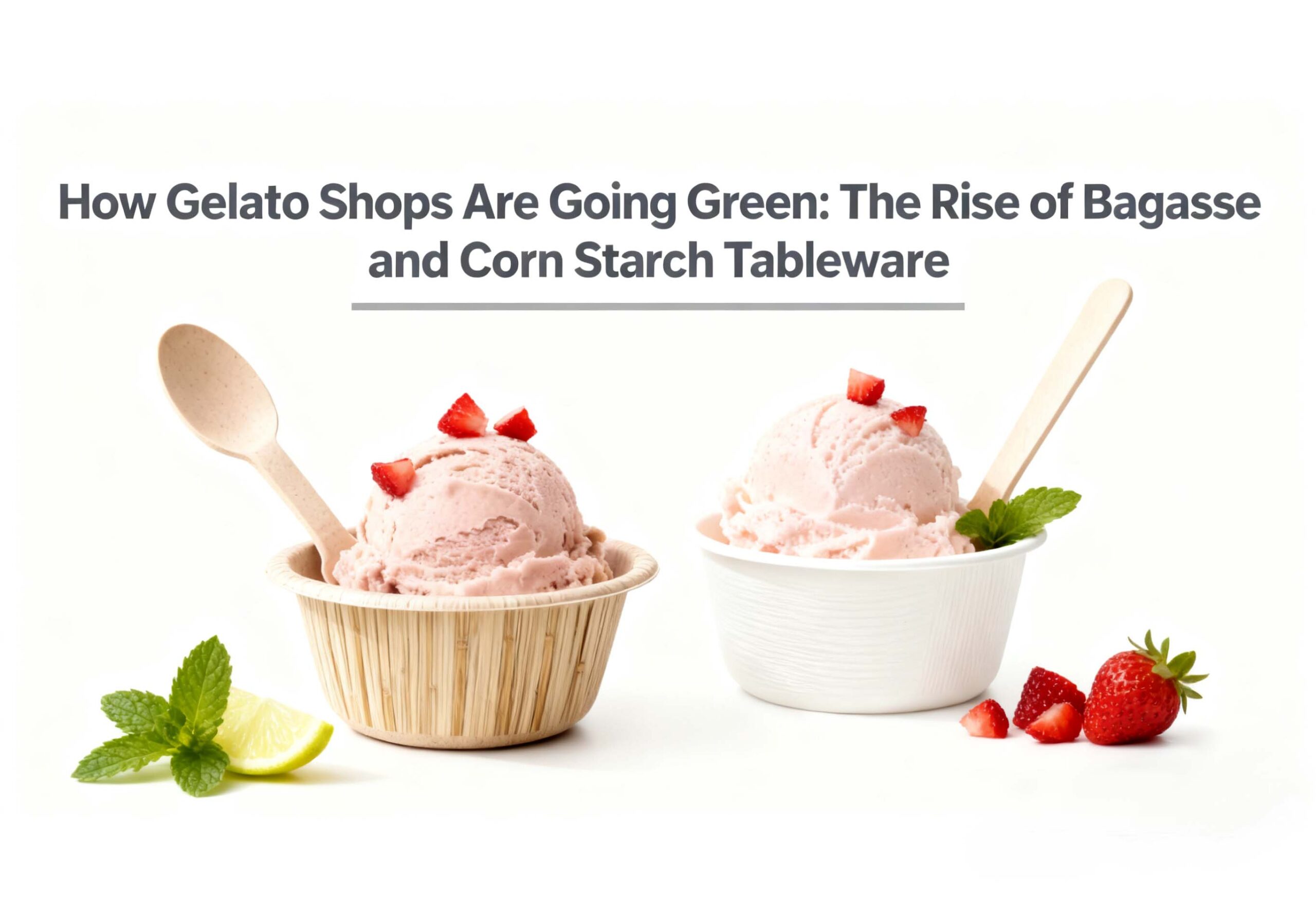
1. Introduction: The Global Rise of Gelato
Once a niche Italian dessert, Gelato has become a global phenomenon — transcending cultures and continents. From Milan to Melbourne, and from Tokyo to Toronto, gelato shops are sprouting everywhere, offering not only creamy, artisanal flavors but also a lifestyle centered around authentic taste and mindful consumption.
Unlike traditional ice cream, gelato is known for its low fat content, dense texture, and slower churning process, resulting in a smoother, more intense flavor experience. As global consumers embrace healthier and more natural options, gelato has come to symbolize not just indulgence, but also craftsmanship, sustainability, and local identity.
Modern gelato brands don’t merely sell frozen treats — they sell an experience. Every element, from the shop’s aesthetic to its utensils, reflects its philosophy. Increasingly, eco-conscious packaging has become a defining part of the gelato identity. Whether it’s using biodegradable spoons, compostable bowls, or recycled takeaway cups, sustainability is now inseparable from brand value.
In this context, the transition from plastic-based packaging to eco-friendly materials like corn starch and bagasse represents more than just compliance — it’s a movement towards a greener dessert culture.
2. Case Studies: Gelato Shops Leading the Eco Trend
Across the world, artisanal gelato brands are redefining how dessert shops can blend indulgence with environmental responsibility. From global names to local boutiques, many are turning to biodegradable packaging solutions—including bagasse bowls and corn starch utensils from DASHAN—to align with consumer demand for sustainability.
Venchi (Italy / Hong Kong): Luxury Meets Sustainability

Founded in Italy in 1878, Venchi has expanded across Europe and Asia with a reputation for premium chocolate and gelato. In Hong Kong, Venchi integrates eco-conscious design into its takeaway operations by offering biodegradable spoons and recyclable paper cups. This approach reflects its Italian heritage of craftsmanship and commitment to sustainability, showing that luxury and responsibility can coexist harmoniously.
GROM (Italy / Japan): Naturally Good, from Ingredients to Packaging

GROM, another iconic Italian brand now popular in Japan, is known for its “gelato the way it used to be” philosophy—pure, natural, and without artificial additives. Extending this principle to packaging, GROM has adopted compostable cups and spoons, helping reduce plastic waste in Japan’s urban dessert culture. The brand’s consistent focus on authenticity and sustainability resonates with eco-aware Japanese consumers.
Messina (Australia): Sweet Innovation with Bagasse Packaging
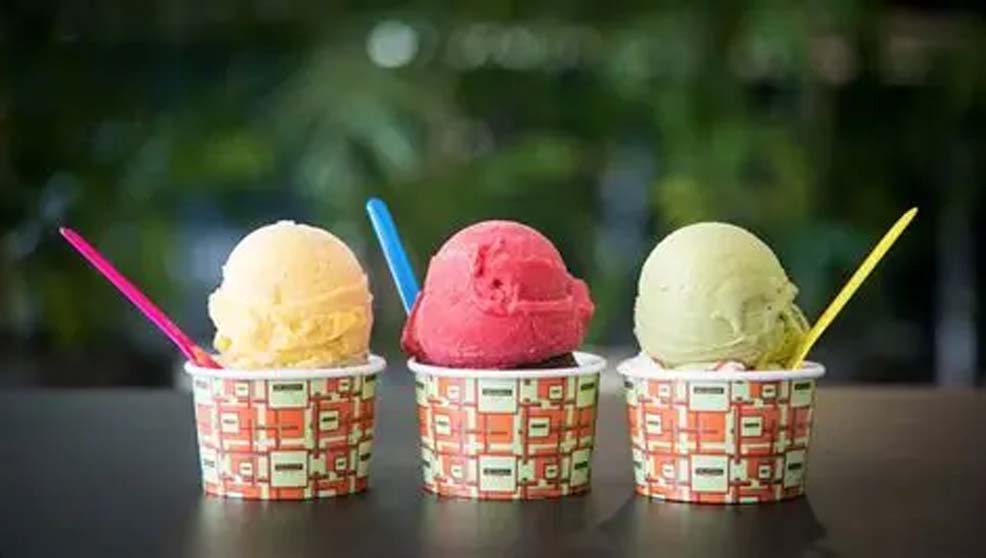
Gelato Messina, founded in Sydney, has become a symbol of creative desserts made with locally sourced ingredients. To match its focus on freshness and innovation, Messina uses bagasse bowls for takeaway gelato, ensuring both strength and compostability. The switch to sugarcane-based packaging not only lowers its carbon footprint but also fits seamlessly into Australia’s growing zero-waste café movement.
Mr. Wildman Ice Cream (China): Nature-Inspired Sustainability
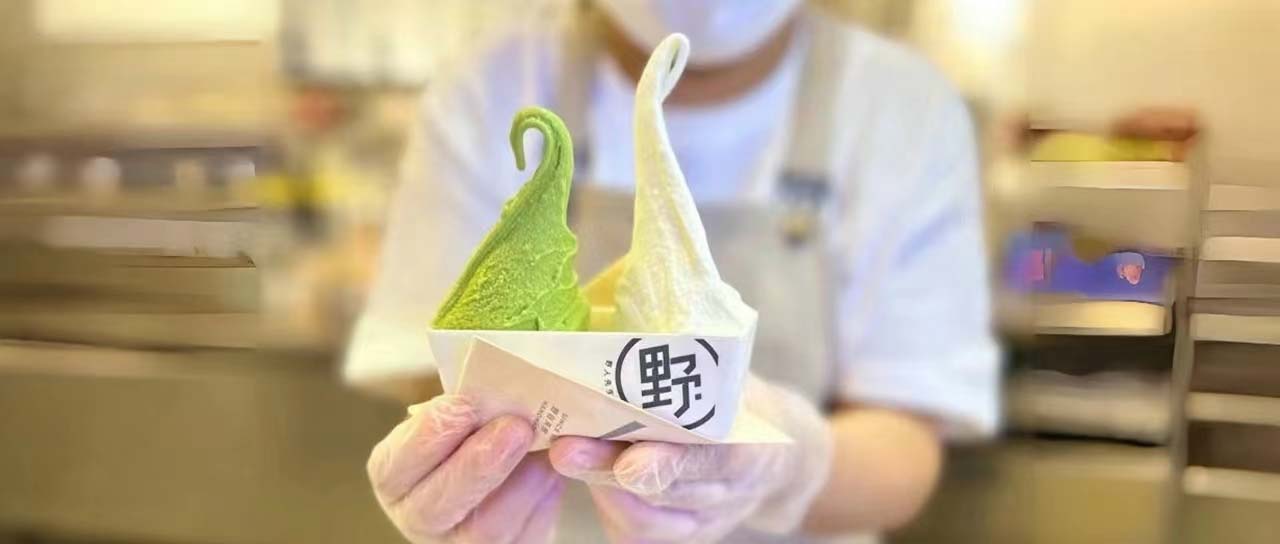
Originating in China, Mr. Wildman Ice Cream (野人先生) captures the imagination of young consumers with its “return to nature” theme and adventurous flavors inspired by fruits, teas, and herbs. The brand has abandoned traditional plastic containers in favor of environmentally friendly packaging made from sugarcane bagasse and cornstarch. Its takeaway bowls are also made from sugarcane fiber, making them fully biodegradable and durable enough for everyday use.Meanwhile, corn starch spoons provide a smooth, natural feel that enhances the tasting experience.
Through these sustainable practices, Mr. Wildman expresses its wild and eco-conscious identity—proving that environmental responsibility can enhance, not compromise, brand aesthetics.
Local Artisan Gelato Shops in Asia: A Shared Movement
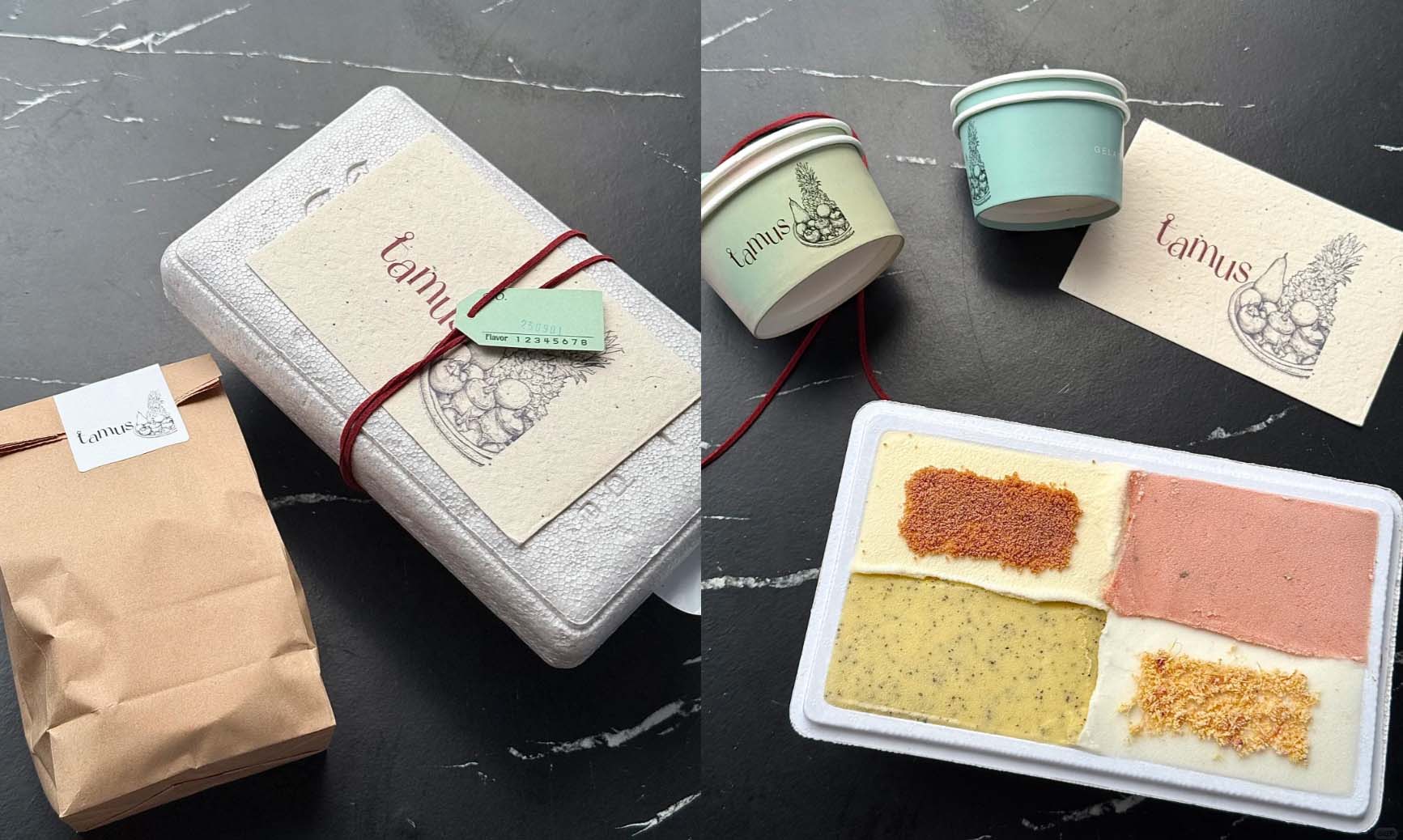
Beyond major brands, many independent gelato shops in Hong Kong, Tokyo, Singapore, and Shanghai are adopting biodegradable tableware made from bagasse and corn starch. These local artisans often collaborate with eco-friendly suppliers like DASHAN to balance functionality, aesthetics, and sustainability. Their commitment not only aligns with tightening plastic regulations but also strengthens their appeal to eco-minded customers.
In each of these cases, eco-friendly packaging is no longer just an operational decision — it’s part of brand storytelling. The visual appeal, texture, and environmental message of biodegradable materials have become crucial differentiators in a competitive market.
So, how do these brands decide which material — corn starch or bagasse — best fits their needs?
3. The Plastic Problem in the Dessert Industry
Behind the cheerful colors of gelato shops lies a serious issue: plastic waste.
Every day, millions of plastic spoons, cups, and lids are discarded after a few minutes of use. In the dessert industry, where aesthetics and hygiene drive single-use packaging, the environmental cost is staggering.
Global Push for Plastic Reduction
Governments worldwide have begun enforcing restrictions on disposable plastics:
-
Hong Kong’s Plastic Ban (2024–2025): Restricts the sale and use of single-use plastic cutlery, straws, and tableware in restaurants.
-
Japan’s Plastic Resource Circulation Act: Encourages businesses to adopt reusable and biodegradable materials.
-
EU Directive on Single-Use Plastics: Bans several common items and promotes compostable alternatives.
These regulations are reshaping the dessert industry, compelling gelato shops to seek sustainable alternatives that meet both functional and aesthetic standards.
Consumer Demand for Sustainable Dessert Experiences
Today’s consumers — particularly millennials and Gen Z — value transparency and environmental responsibility. They are more likely to choose brands that use biodegradable or compostable packaging and proudly display their green credentials.
The concept of a “sustainable dessert experience” is gaining traction. It’s not just about taste anymore — it’s about ethics, sustainability, and design. This cultural shift has made materials like corn starch and bagasse the new stars of eco-packaging.
4. Material Focus: Bagasse & Corn Starch — The Natural Duo for Sustainable Packaging
As the world searches for eco-friendly alternatives to plastic, two materials stand out for their balance of performance, affordability, and sustainability: bagasse and corn starch. Both have become the go-to solutions for gelato shops seeking packaging that looks great, feels premium, and aligns with environmental values.
Bagasse Tableware: The Power of Sugarcane Fiber
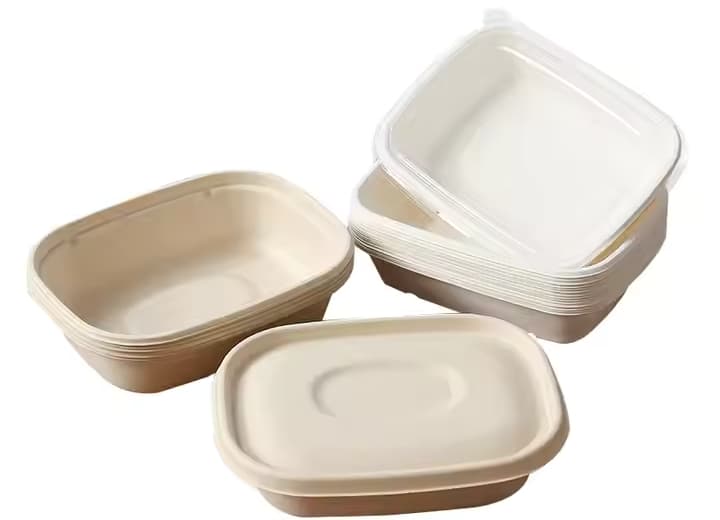
Bagasse, a by-product of sugarcane processing, turns what was once agricultural waste into a valuable, renewable resource. When molded into bowls, trays, or cups, it delivers:
-
Heat and cold resistance — perfect for gelato, as well as hot desserts or sauces.
-
Compostability — fully breaks down within 90 days under industrial composting conditions.
-
Natural aesthetic — its organic color and texture fit the artisanal, eco-luxury appeal of modern dessert shops.
Bagasse is especially favored by high-end and eco-conscious brands like Gelato Messina and boutique shops that want both functionality and sustainability in their packaging.
Corn Starch Tableware: Functional, Compostable, and Consumer-Friendly
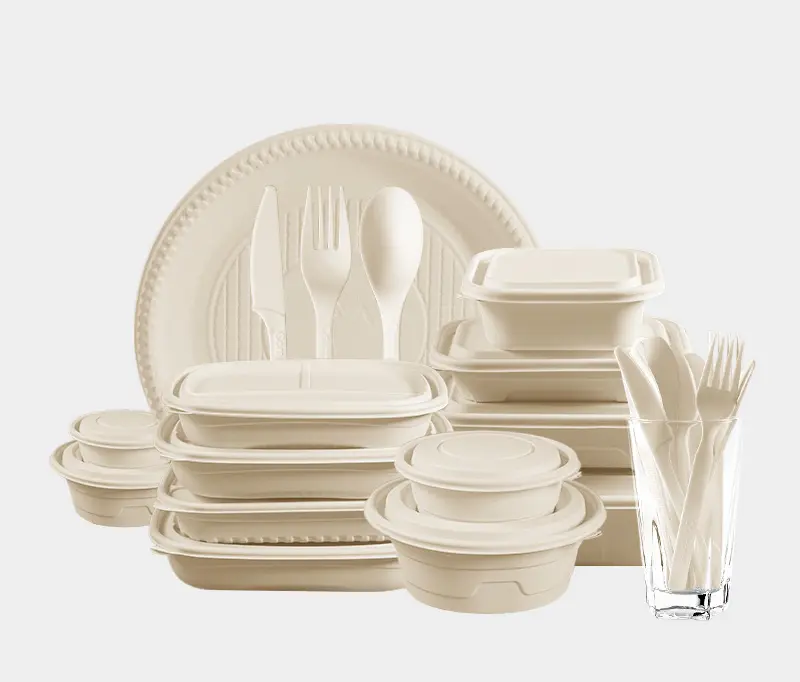
Corn starch tableware is made by converting natural corn starch into a polymer material, often combined with biodegradable PLA (polylactic acid). It offers:
-
High rigidity and smooth texture, similar to traditional plastic.
-
Safe contact with food, free from BPA and toxic chemicals.
-
Renewable sourcing, as corn is abundant and globally cultivated.
-
Compostable lifecycle, reducing long-term environmental impact.
For gelato shops, corn starch spoons and cups provide a balance between comfort and eco-performance — maintaining a familiar feel for consumers while eliminating the guilt of plastic use.
The combination of bagasse bowls and corn starch spoons has quickly become the standard pairing in the sustainable dessert industry. Together, they create a unified message: eco-friendly can also be elegant, durable, and practical.
5. Why DASHAN Is the Trusted Supplier for Global Gelato Brands

In this evolving market, choosing the right supplier is as important as choosing the right ingredients. DASHAN has positioned itself as a leading manufacturer of biodegradable and compostable tableware, providing high-quality solutions for global foodservice brands, including gelato and dessert shops.
Comprehensive Product Range
DASHAN’s product line covers a full spectrum of eco-packaging solutions, including:
-
Bagasse bowls and trays — made from 100% sugarcane fiber, available in various capacities for gelato, frozen yogurt, and desserts.
-
Corn starch tableware — spoons, forks, knives, cups, and containers that mimic plastic’s usability but are completely compostable.
-
PLA lids and PET covers — transparent options for aesthetic presentation and secure takeaway service.
Global Quality and Certification

All DASHAN products comply with international food safety and environmental standards:
-
BPI Compostable, OK Compost, and FDA/LFGB certifications ensure reliability.
-
Manufacturing adheres to ISO 9001 and ISO 14001 systems for quality and sustainability.
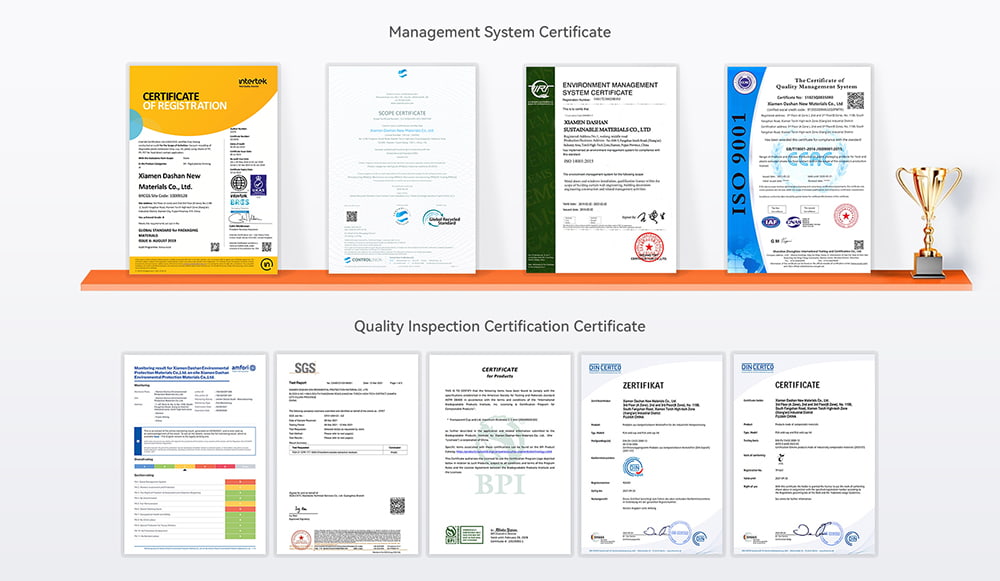
Why Gelato Brands Choose DASHAN
-
Expertise: Over a decade of experience in biodegradable materials manufacturing.
-
Innovation: Constant R&D in material performance and design.
-
Scalability: Capable of supplying both boutique artisan shops and large franchises.
-
Sustainability Commitment: 100% plastic-free philosophy in product development.
From Italy to China, Australia to the U.S., gelato chains trust DASHAN to deliver packaging that enhances brand identity while protecting the planet.
6. Conclusion: Building a Sweet Future, Sustainably
The rise of gelato culture mirrors a broader global trend — the desire to enjoy life’s pleasures responsibly. As more dessert shops embrace sustainability, the demand for eco-friendly packaging is no longer optional; it’s essential.
Bagasse and corn starch tableware represent the future of dessert packaging — renewable, compostable, and elegantly simple. By choosing DASHAN as your packaging partner, gelato brands can seamlessly integrate sustainability into their operations without compromising design, quality, or consumer satisfaction.
In the world of frozen desserts, where creativity meets conscience, DASHAN’s corn starch and bagasse solutions ensure every scoop is served with a side of sustainability.
❓ FAQs
-
Why are gelato shops switching to bagasse and corn starch tableware?
They reduce reliance on single-use plastics, meet regulatory pressure, and appeal to eco-aware consumers. -
Can bagasse bowls handle cold desserts like gelato?
Yes — high-quality bagasse bowls are cold- and moisture-resistant, making them ideal for frozen treats. -
Is corn starch tableware safe for food contact and cold use?
Yes — when certified to food-contact standards and properly manufactured, corn starch tableware performs well for cold and frozen applications. -
What’s the difference between bagasse and corn starch tableware?
Bagasse is derived from sugarcane fiber and excels in bowls/trays; corn starch is plant-based polymer suited for spoons, lids, and containers requiring smooth finish. -
How can gelato shops select the right supplier for these eco-packaging materials?
They should verify supplier certifications (compostable, food-safe), product performance (cold/hot resistance), manufacturing capacity, and alignment with the brand’s sustainability story.
📌 Conclusion
The dessert industry is evolving — from indulgence to responsibility. Bagasse and corn starch tableware aren’t just alternatives, but preferred solutions in the era of eco-packaging. For gelato shops seeking to align with global sustainability trends, choosing DASHAN’s moulded products means delivering both quality and purpose. Every scoop served in biodegradable tableware is a step toward a greener future.
📚 References
-
Khoisnam, N., & Singh, R. (2024). Eco-Conscious Packaging: Exploring Sugarcane Bagasse-Based Tableware Manufacturing. E3S Web of Conferences, 472, 01013. Retrieved from https://www.e3s-conferences.org/articles/e3sconf/pdf/2024/86/e3sconf_rawmu2024_01013.pdf
-
Hossam, Y., El-Said, A., & Ahmed, S. (2023). Fabrication and characterization of biodegradable plates constructed from a bagasse pulp combination. Frontiers in Sustainable Food Systems, 7, 1220324. Retrieved from https://www.frontiersin.org/journals/sustainable-food-systems/articles/10.3389/fsufs.2023.1220324/pdf
-
Liu, C., Zhang, W., & Chen, M. (2020). Biodegradable, hygienic, and compostable tableware from sugarcane bagasse. Sustainable Materials and Technologies, 25, e00126. Retrieved from https://www.sciencedirect.com/science/article/pii/S2590238520305580
-
Cheng, H., Liu, Z., & Tang, L. (2021). Starch-based biodegradable packaging materials. Industrial Crops and Products, 169, 113646. Retrieved from https://www.sciencedirect.com/science/article/abs/pii/S0924224421003393
-
Patnaik, S., Das, R., & Mohanty, S. (2020). Thermal degradation of corn starch-based biodegradable plastics: Kinetic study. Journal of Thermal Analysis and Calorimetry, 141(3), 1895–1903. Retrieved from https://www.sciencedirect.com/science/article/abs/pii/S1743967120300076
-
Corn Starch Tableware: The Eco-Friendly Alternative Under Hong Kong’s Plastic Ban.Retrieved fromCorn Starch Tableware: Eco Alternative In Hong Kong
Copyright Statement
© 2025 Dashan Packing. All rights reserved.
This article is an original work created by the Dashan Packing editorial team.
All text, data, and images are the result of our independent research, industry experience,
and product development insights. Reproduction or redistribution of any part of this content
without written permission is strictly prohibited.
Dashan Packing is committed to providing accurate, evidence-based information and
to upholding transparency, originality, and compliance with global intellectual property standards.





